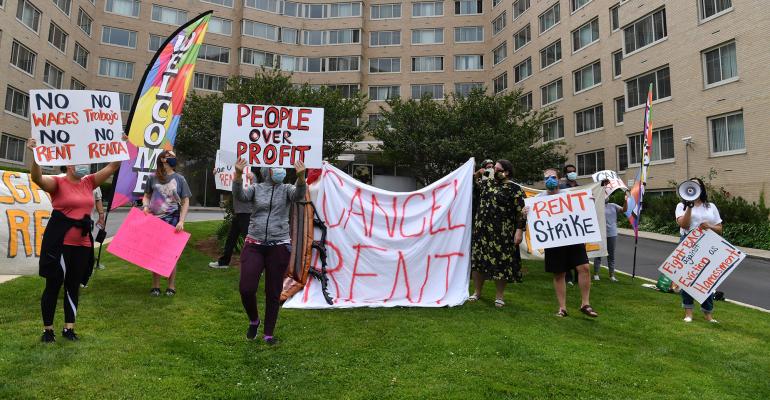The U.S. Supreme Court ended the Centers for Disease Control and Prevention’s (CDC’s) eviction moratorium on Thursday, Aug. 26, giving much-needed relief to America’s small housing providers, who’ve been facing financial hardship for more than a year.
In a 6-3 ruling, a majority of justices agreed with the stay on the lower court’s order finding the CDC’s eviction moratorium to be unlawful and no longer justified.
The justices wrote, “The moratorium has put the applicants, along with millions of landlords across the country, at risk of irreparable harm by depriving them of rent payments with no guarantee of eventual recovery. Despite the CDC’s determination that landlords should bear a significant financial cost of the pandemic, many landlords have modest means.”
I applaud the Supreme Court’s decision as it is the correct one, from both a legal standpoint and a matter of fairness. It brings to an end an unlawful policy that places financial hardship solely on the shoulders of mom-and-pop housing providers, who provide nearly half of all rental housing in America, and it restores property rights in America.
We now need to focus on working with the Administration, Congress, states and localities to help disburse rental assistance funds to residents and housing providers in need. IREM is committed to working with all our government agencies to ensure the emergency rental assistance program is a success, to help our residents regain housing stability and to preserve the viability of the rental housing sector.
The expiration of the federal eviction moratorium is an important catalyst to returning renters to a normal payment schedule and thus providing stability to the housing providers who’ve been damaged by revenue losses, and may be struggling to pay their mortgages, finance property operations and meet their own financial obligations.
The need to disburse rental assistance in an expedited manner is of great importance. As of July, only a fraction of the rental assistance funds allocated by Congress have been disbursed to tenants and housing providers. The $46.5 billion in rental aid, which was created to pay rent accrued during the pandemic, is being disbursed at a very slow pace. The total amount disbursed thus far is about $5.1 billion, or roughly 11 percent of the cash allocated by Congress.
IREM, along with our 13 coalition partners, has been tirelessly vocal about the need to distribute these funds and standardize the funds disbursement process. Our call for standardization seeks to solve a number of issues. First, it would end a massive duplication of efforts, since separate applications for funding need to be filed in every case at the state and local levels. Multiply that by property owners with assets in multiple locations and you can see the frustration that’s mounting among all involved parties. One member we know of has actually filed more than 250 different rental assistance applications to date.
Our advocacy efforts have paid dividends as on Aug. 25, the White House released additional guidance aimed at speeding up and improving distribution of funds to tenants and housing providers in need. These include:
- Allowing self-attestation to document a household’s eligibility for ERAP. This includes showing financial hardship, income and risk of homelessness/housing instability. It specifically states that the administering entities can rely on that alone to document household income eligibility.
- Housing providers can receive an advance on expected assistance. Treasury will release guidelines to provide a portion of estimated “bulk payments” (payments covering multiple tenants in a single property) in anticipation of receiving the full application and documentation requirements.
- State and local administrators can partner with non-profits to deliver advance assistance to households at risk of eviction while their application is processed. Expedited payments will be available for tenants who are at risk of eviction, and will be made available through non-profit organizations. Federal ERAP funds will cover these payments once the application is fully processed.
There are a number of resources available to property managers for rental assistance. The National Council of State Housing Agencies (NCSHA) created a rental assistance map to provide information on how to access rental assistance in your state. Also, the Consumer Federal Protection Bureau created a webpage with tools and resources housing providers can use to obtain assistance funds.
Recently, IREM conducted a webinar titled, Ending of the Federal Eviction Moratorium—What Property Managers Should Know & Best Practices to Follow, to provide members with tools and resources for handling evictions.
As you can see, the issue of rental relief is a concerted effort, and so it must be, for the sake of our constituents and the residents they serve.
More than ever, we are all in this together.
Chip Watts is 2021 president of the IREM. In addition, he serves as president and executive of Watts Realty Co. in Birmingham, Ala.





